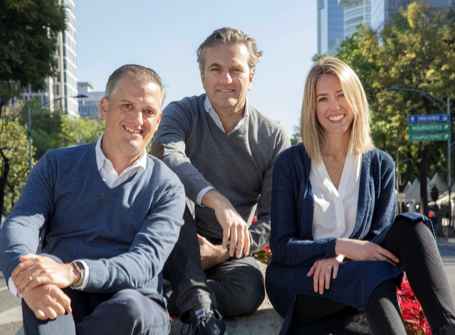What Does 2020 Look Like for Southeast Asia
| By Gabriela Huerta | 0 Comentarios

According to Sriyan Pietersz, Investment Strategist at Matthews Asia, looking at the 2020 Outlook for Southeast Asia, “the best environment would be moderate U.S. growth, a sideways U.S. market and a weaker U.S. dollar.”
In his opinion, global risk appetite is rising again. This comes following a developing U.S.—China trade truce, easing Brexit worries, expectations of a long pause by the U.S. Federal Reserve, a turn in the semiconductor cycle and a stabilizing Chinese renminbi. “The Fed’s pause, validating a “no recession” outlook, and the potential for a rise in emerging market (EM) growth and earnings relative to developed markets suggest the onset of a positive impetus for both EM equities and currencies.” He mentions.
Pietersz believes the main risks to the outlook are a reversal of progress in trade negotiations, a resurgence of recession fears in the U.S. economy and, importantly, the wild card of U.S. Democratic primaries in the first quarter of 2020 “that could affect risk perceptions negatively just as the global economy is lifting. This could affect a large swath of the U.S. equity market, especially the technology and banking sectors. A negative U.S. market likely would drag down global markets; we believe the best environment for EM and Asian equities is moderate U.S. growth, a sideways U.S. market and a weaker U.S. dollar”.
Within EM, he is convinced that Asia looks to be the biggest beneficiary of an easing trade conflict, a turn in the semiconductor cycle and a firming renminbi.
“Within Asia, we believe the more open and tech-oriented North Asian economies such as Japan, South Korea, Taiwan and China, may outperform as Southeast Asian markets in general are not as big a beneficiary of a U.S.—China trade resolution and have little tech exposure. While the just-concluded Phase One trade deal could improve the overall global trade climate, China’s commitments to increase agricultural and tech imports from the U.S. in the near term could divert some demand away from countries such as Vietnam, Malaysia, Singapore and Thailand. That said, the trend of global supply-chain relocation will likely continue on labor cost and geopolitical risk diversification considerations, and we believe this will benefit Southeast Asia and India in the medium term.”
On a per country outlook Pietersz says:
Vietnam should continue its secular uptrend, supported by continuing production relocation investment out of China. The start of a new political cycle in 2020 should also add renewed policy impetus, while the Euro-Vietnam free-trade agreement is likely to support export growth. An International Monetary Fund-supported revaluation of historical GDP by 25% will improve public debt and fiscal headroom, allowing increased public spending on infrastructure to support future growth. Adding to this economic tailwind, reforms such as passage of a new securities law and improving regulation on foreign-ownership limits, the upcoming launch of “Diamond ETFs” (funds that circumvent foreign-ownership limits, and help to address the issues of access to Vietnam’s stock market) and the improving prospects of Vietnamese banks should draw new money into a wider range of listed stocks. We believe these changes should also help to pave the way for Vietnam’s ultimate inclusion in the MSCI EM index. The moderate valuation for the Vietnam Ho Chi Minh Stock Index (VN-Index)—13.2x Bloomberg consensus 2020 price/earnings ratio—is supported by strong forecast earnings growth of 20%.
Singapore, as the chief beneficiary in Southeast Asia of an improved trade environment, will also likely receive a boost from a more expansionary budget as the government tilts toward a general election. In the equity market, earnings growth may have bottomed after multiple quarters of downgrades, and given FTSE Straits Times Index constituents’ exposure to global demand recovery, risk is biased to the upside. Valuations are inexpensive (Bloomberg consensus 2020 price/earnings ratio of 12.5x), trading near the 10-year average, and investor positioning is light, positioning the market to benefit from a recovery in investor interest. Shares of banks, technology, real estate and select crude palm oil (CPO) companies are well-positioned to outperform, in our view.THE PHILIPPINES
Among the rest, the Philippines should lead the pack as growth re-accelerates back into the 6% to 7% range and renewed impetus in credit growth fueled by interest rate and reserve requirement ratio (RRR) cuts drive interest rate-sensitive sectors such as banks and property. Infrastructure stocks and consumer durables should also benefit from a ramp up of President Duterte’s ‹Build, Build, Build’ program and the personal income tax cuts in last year’s tax reform package (and stable Overseas Filipino Worker flows). The Philippine stock market’s valuation, however, is trading well below its 10-year average of 18.8x (Bloomberg consensus 2020 price/earnings ratio of 15x), triggered by a potential shift in the regulatory environment with implications for sanctity of public contracts and banks’ asset quality. This has led to foreign fund outflows, and it is to be hoped that clarification of the issues by the government will allow the positive macro momentum to drive the market forward in 2020.
Malaysia is likely to continue to move sideways, despite having languished since the 2018 general election. Factors in its favor are its underowned status, a relatively undervalued MYR that will augment its heavy trade exposure, and a potential rise in oil prices as global trade and growth dynamics improve (Malaysia is the only net Asian oil exporter and higher oil will fund increased domestic stimulus). However, the slowdown in private consumption should offset near-term tailwinds from external demand. Further, rising political risk is leading to policy implementation paralysis, which may affect the outlook for an anticipated rise in infrastructure spending. The Malaysian ringgit is also among the currencies most exposed to potential volatility in the Chinese renminbi resulting from any setback in U.S.—China trade relations. Banks, tech and export plays are better-positioned sectors, in our view.
Indonesia has the benefit of value as it has given up all of its year-to-date gains in the recent (and traditional) new government-related sell-off. Bank stocks and diverse large caps have pulled back on recent pronouncements by the president and various cabinet members regarding the need for lower interest rates and energy prices. That said, the new government appears constructive and reform-oriented and committed to deliver on labor and omnibus laws within the first quarter of 2020. If achieved, we believe this would drive a re-rating of the market against a backdrop of a modest but steady improvement in growth in 2020, while laying the foundations for a pickup in foreign direct investment (FDI) in the medium term. Higher FDI, in turn, would improve stability of capital flows and allow Indonesia to pursue a more growth-oriented policy mix.
The Thai economy was not immune to the global economic slowdown and GDP growth has slowed sharply on the back of weak exports and delays in government spending. While fiscal activity and public infrastructure spending are expected to rise in 2020, the prospects for growth remain muted as private domestic demand will be constrained by a slowdown in housing construction and relatively high household debt levels, which will drag on personal consumption. Thailand, as a safe-haven play, is likely to underperform the region, lacking economic momentum and tech exposure. A large cyclical/value contingent led by the energy sector and select large banks, however, could outperform in a local-market context as excess domestic liquidity continues to flow into the capital markets. We see the Thai market as a defensive hedge against a reversal in U.S.—China trade relations or a sharp change in the U.S. outlook.







